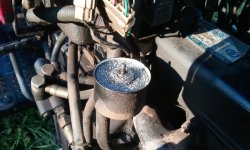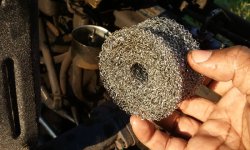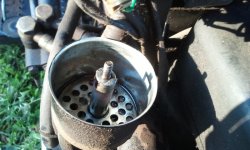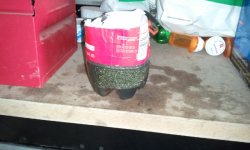The hydraulic fluid level could have changed due to running the TPH up and down. If you filled it with the TPH up, then dropped the arms, that will push some fluid back into the sump. I wouldn't think it would make a whole gallon difference, though.
After you get the breather assemble completely cleaned and re-installed, top up your engine oil to the dipstick mark, check your hydraulic fluid with the TPH and loader down completely and set the fluid level to the mark on the dipstick. Check our radiator level, too. While you're at it, check the oil level in the injector pump and be sure it is clean - if not, drain, flush and refill with engine oil as per the manual. Then clean the outside of the tractor pretty well so you will be able to see any fluid leaks quickly and easily. After that, you are ready to start the tractor and see what your oil pressure is and if there are any leaks or errant flows.
At idle, these tractors barely get the pressure gauge needle off the stop. At operating RPM (say 2000) with a cold engine, you should have about 35-45 psig oil pressure or the metric equivalent. If not, shut it down and find out why. If the pressure is okay, run it for five minutes and then shut it down and check all the fluid levels again and check for any cross-contamination of fluids. If all is okay, then run it until the engine is at operating temperature, about 190ーF/90ーC and see what the oil pressure is the - it should be above 15-20 psi. If not, you have a problem somewhere that needs addressing.



